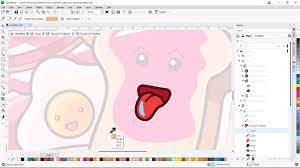Mastering Design Fluidity: An Extensive Exploration of Exiting Focus Mode in CorelDRAW

Introduction:
CorelDRAW, a stalwart in the graphic design realm, continues to evolve with innovative features that cater to the diverse needs of designers. One such feature, Focus mode, provides designers with a magnified view of specific design elements for meticulous editing. However, knowing how to exit Focus mode is equally important as it allows designers to seamlessly transition back to the overall canvas view. This comprehensive guide delves into the intricacies of exiting Focus mode in CorelDRAW, addressing the needs of both beginners seeking foundational insights and experienced designers looking to refine their workflow.
I. Understanding the Significance of Exiting Focus Mode:
- Transition to Comprehensive View: Exiting Focus mode signifies a return to the comprehensive view of the design canvas. It is a crucial step in the design process, allowing designers to assess their modifications, review the entire composition, and make global adjustments.
- Workflow Continuity: Knowing how to exit Focus mode seamlessly integrates with an efficient design workflow. Designers can shift between focused edits and a holistic view, ensuring a fluid and uninterrupted creative process.
II. Exiting Focus Mode: A Step-by-Step Guide:
- Locating the Exit Icon: Within the Focus mode interface, look for the exit icon or button. Typically represented as an “X” or a close button, clicking on this icon will promptly exit Focus mode and return you to the standard canvas view.
- Shortcut Keys: Streamline your workflow by incorporating keyboard shortcuts for exiting Focus mode. While in Focus mode, press “Esc” or “Ctrl + Shift + F” to swiftly exit, providing a quick and efficient transition.
- Status Bar Options: The status bar at the bottom of the CorelDRAW interface often features options for managing Focus mode. Explore these options to find a convenient way to exit, ensuring that the process aligns with your preferred workflow.
III. Advanced Techniques for Workflow Optimization:
- Contextual Exit: Understand the context of your design modifications before exiting Focus mode. If you’ve been working within a specific group or layer, consider whether a more targeted exit strategy, such as exiting within the Object Manager, would enhance your workflow.
- Navigating Post-Exit: After exiting Focus mode, familiarize yourself with the navigation tools to efficiently explore the overall design. Zooming out, panning, and utilizing the Hand tool ensure a smooth transition and provide a comprehensive overview of the design.
IV. The Interface Post-Exit:
- Reviewing Modifications: Exiting Focus mode allows designers to review the modifications made to the focused elements. This step is crucial for ensuring that the detailed edits align with the overall design vision.
- Inspecting Global Elements: Post-exit, take the opportunity to inspect global elements, assess the composition, and make high-level adjustments. This comprehensive view aids in maintaining design coherence and addressing any issues that may have arisen during the focused editing phase.
V. Troubleshooting and Best Practices:
- Saving Before Exiting: As a best practice, save your work before exiting Focus mode, especially if significant edits have been made. This precautionary step ensures that your progress is preserved, minimizing the risk of data loss.
- Optimizing Performance: Exiting Focus mode can be resource-intensive in complex designs. Regularly optimize your document by managing layers, removing unnecessary elements, and ensuring that your workspace is conducive to efficient design exploration.
VI. Collaboration and Exiting Focus Mode:
- Synchronizing Views: In collaborative design environments, communicate effectively about exiting Focus mode. Ensure that team members are aware of your intention to exit, allowing for synchronized views and facilitating smoother collaboration.
- Utilizing Object Manager Post-Exit: After exiting Focus mode, leverage the Object Manager to continue refining your design. The hierarchical organization aids in locating and managing objects, layers, and groups, contributing to an organized and efficient workflow.
Conclusion:
In conclusion, mastering the art of exiting Focus mode in CorelDRAW is an integral aspect of a designer’s toolkit. As designers delve into the step-by-step guide and explore advanced techniques, they gain a deeper understanding of how to seamlessly transition between focused edits and a holistic view of their designs. By incorporating best practices and optimizing their workflow, designers can ensure that their creative process remains fluid, efficient, and aligned with their design vision. Embrace the versatility of Focus mode in CorelDRAW, and navigate the intricate tapestry of your designs with confidence and precision.







